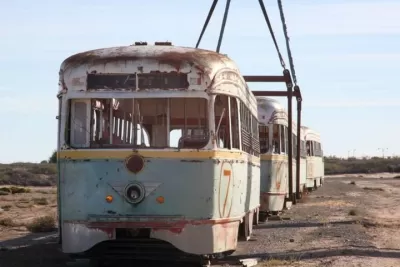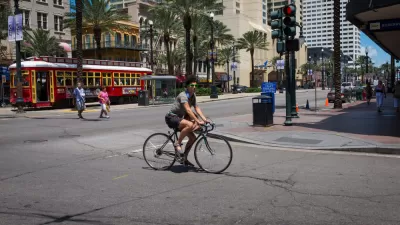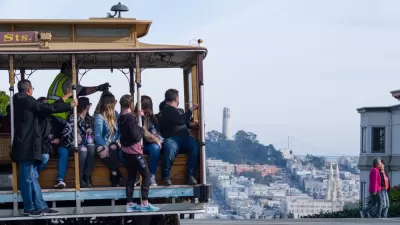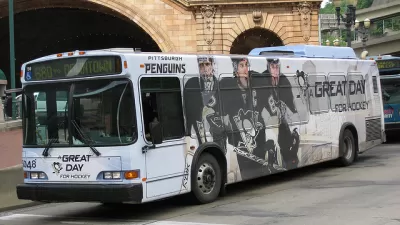City's don't need vintage streetcars; cities need the frequency and convenience of service delivered by the streetcar lines from days past.

Owain James writes in response to the ongoing streetcar renaissance, noting that many recently opened streetcar lines have struggled (as transit on the whole has struggled as well). The argument to made as the lessons of the streetcar renaissance begin to emerge, according to James: "public transportation doesn’t need to be made of streetcars to deliver what streetcars once did."
Moreover:
The level of transit service in U.S. cities in the heyday of streetcars has been unmatched since, but the switch from streetcars to buses is not responsible for this decline. As automobile traffic increased, streetcars had to compete for road space that was filling up quickly. While streetcars ran on tracks, these were almost always installed on roads that were open to all automobiles, so streetcars had to sit in traffic like everyone else.
With lessons from Kansas City, Los Angeles, and Washington, D.C., any city operating a newly opened streetcar, and the cities about to open a new streetcar line, should pay attention.
FULL STORY: We miss streetcars’ frequent and reliable service, not streetcars themselves

Planetizen Federal Action Tracker
A weekly monitor of how Trump’s orders and actions are impacting planners and planning in America.

Map: Where Senate Republicans Want to Sell Your Public Lands
For public land advocates, the Senate Republicans’ proposal to sell millions of acres of public land in the West is “the biggest fight of their careers.”

Restaurant Patios Were a Pandemic Win — Why Were They so Hard to Keep?
Social distancing requirements and changes in travel patterns prompted cities to pilot new uses for street and sidewalk space. Then it got complicated.

Platform Pilsner: Vancouver Transit Agency Releases... a Beer?
TransLink will receive a portion of every sale of the four-pack.

Toronto Weighs Cheaper Transit, Parking Hikes for Major Events
Special event rates would take effect during large festivals, sports games and concerts to ‘discourage driving, manage congestion and free up space for transit.”

Berlin to Consider Car-Free Zone Larger Than Manhattan
The area bound by the 22-mile Ringbahn would still allow 12 uses of a private automobile per year per person, and several other exemptions.
Urban Design for Planners 1: Software Tools
This six-course series explores essential urban design concepts using open source software and equips planners with the tools they need to participate fully in the urban design process.
Planning for Universal Design
Learn the tools for implementing Universal Design in planning regulations.
Heyer Gruel & Associates PA
JM Goldson LLC
Custer County Colorado
City of Camden Redevelopment Agency
City of Astoria
Transportation Research & Education Center (TREC) at Portland State University
Camden Redevelopment Agency
City of Claremont
Municipality of Princeton (NJ)





























